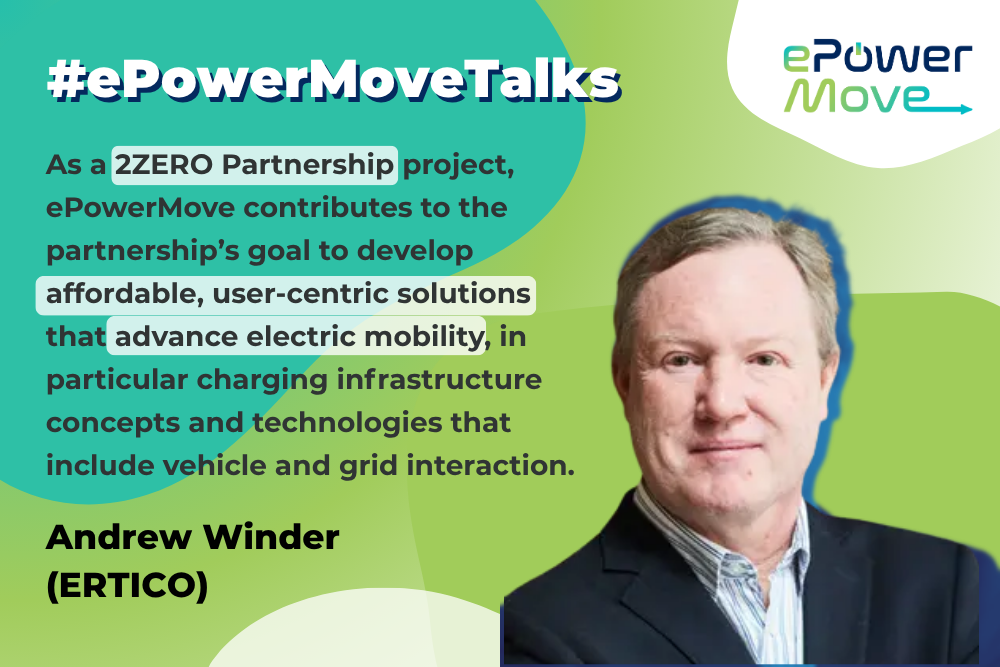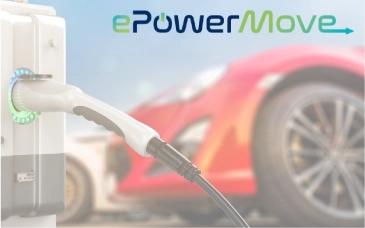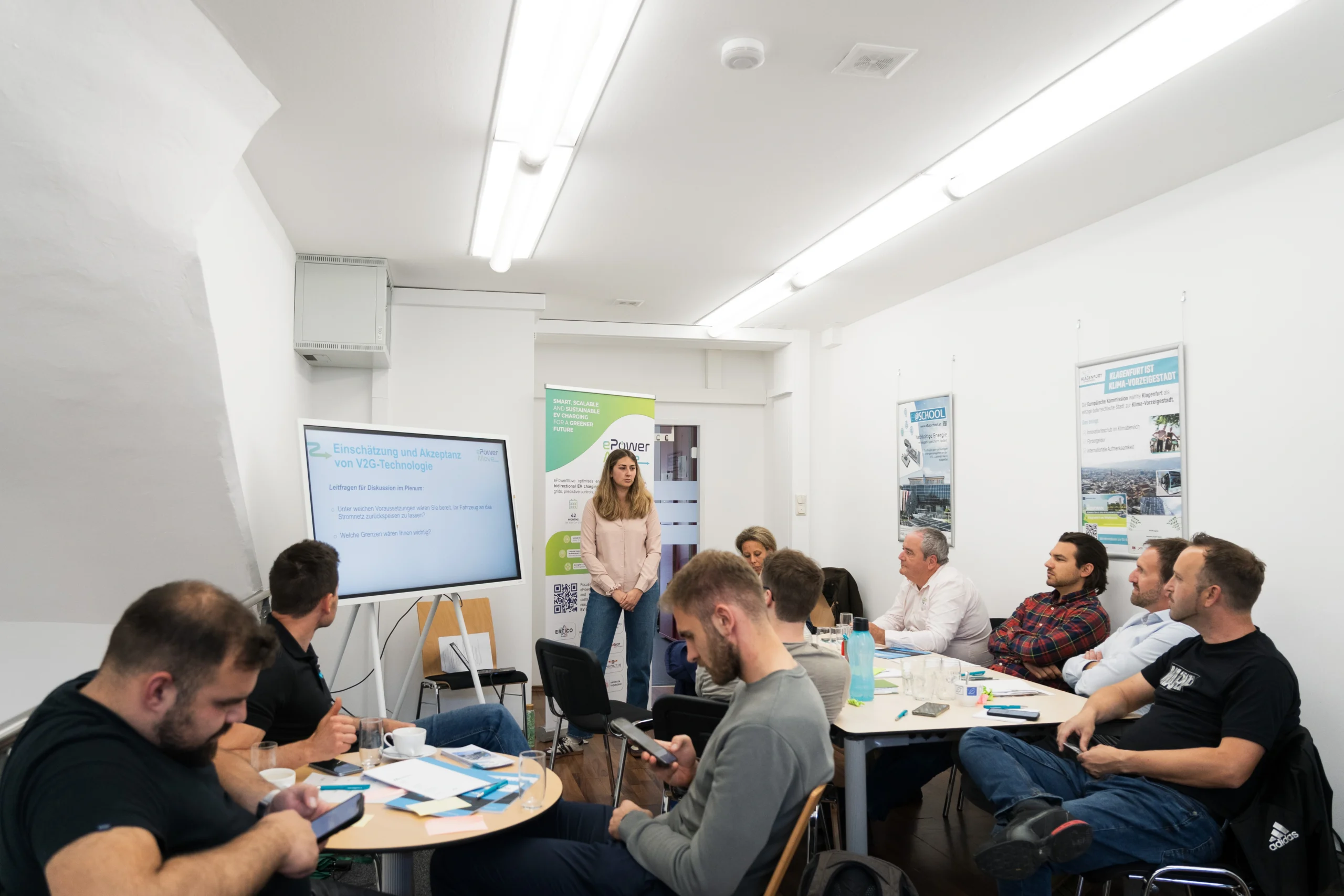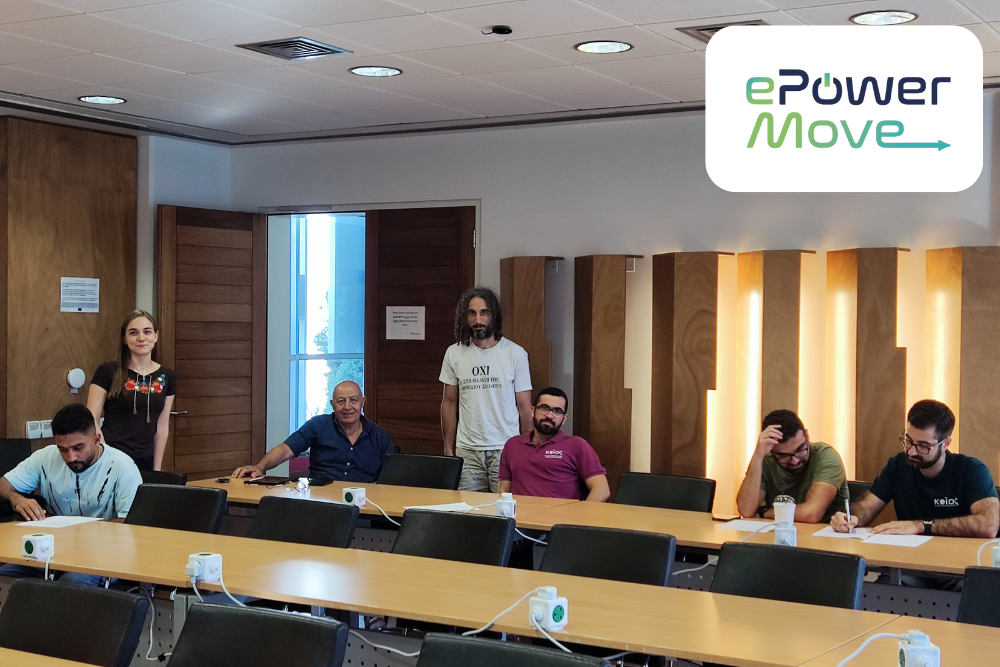In the latest launch of the ePowerMove `Behind the Plug' series, we speak with Andrew Winder, Senior Manager in Green & Urban Mobility at ERTICO, and our project coordinator. In this interview, we shed light on the value of ePowermove, our progress to date, and how we aim to contribute to the 2Zero targets.
ERTICO is a public-private partnership with over 120 partners. Through EU-funded projects, ERTICO platforms, Congresses, advocacy and thought leadership, it advances Intelligent Transport Systems (ITS) and services across Europe and beyond. One of the major domains of ITS covered by ERTICO is Green and Urban Mobility, which encompasses traffic management, multimodality, human and social factors, transport resilience, and ITS for pollution reduction and electrification in the road transport sector. ePowerMove’s coordinator, Andrew Winder, has been managing or contributing to projects at ERTICO since 2013, covering green and urban mobility aspects. These include other electromobility projects (
FABRIC,
NeMo, ELVITEN,
eCharge4Drivers) as well as emission reduction (
ecoDriver,
MODALES) and CCAM (
SINFONICA). He previously worked for consultancies in the UK and France.
Several EU-funded projects already address EV charging as a part of the green transition in the European Union. What does ePowerMove bring to the table?
Previous and ongoing EU-funded projects address many aspects of EV charging. These include fast charging on the interurban and Trans-European Network, interoperability of charging services across providers, countries, and vehicle models, charging for different types of vehicles (trucks, buses, light vehicles), wireless and dynamic charging, electric grid effects and management, and user-friendly value-added services associated with charging to encourage uptake and make EV charging easier. The main focus has been on innovation, standardisation, and stimulating deployment.
While rapid charging is important to provide confidence for EV drivers on longer trips, for the most part, drivers are likely to need to charge over longer periods of time (e.g, while at home or at work). This is also cheaper and reduces strain on the grid.
Moreover, the increasing numbers of public charging points in the urban environment call for lower cost and less intrusive infrastructure, while maintaining accessibility and ease of use for all, including potential future users.
ePowerMove responds to these needs by adopting a user-centric approach to co-design, as well as charging infrastructure that is modular, low-cost, bi-directional, and appropriate for different socio-economic and climatic conditions in Europe – for example, the project has demonstration sites in the Nordics (Helsinki), the Alps (Klagenfurt), and the Mediterranean (Nicosia). One-year public demonstrations in these three cities will result in a significant database of operational data and guide the project’s later work in developing business models, recommendations, and simulations to stimulate large-scale rollout of vehicle-to-grid (V2G) technology and bidirectional charging.
The ePowerMove consortium comprises a variety of stakeholders, from universities to industry, operators, service providers, public agencies, and associations. How does the project leverage such a varied partnership?
The majority of ePowerMove partners are from the countries of the three demonstration sites: Finland, Austria, and Cyprus, including manufacturers, charging and grid operators, and public authorities/agencies, with specific roles. Some of them are experienced in EU research projects and others are new to this kind of activity. To ensure cohesion, local coordination in each site is undertaken by three ERTICO partners with wide experience in managing major European projects and demonstrations. These are (respectively)
VTT,
AustriaTech, and the
University of Cyprus’s KIOS Centre of Excellence. A specificity of the Klagenfurt demonstration is that it includes a cross-border aspect, with partners from neighbouring Slovenia. Away from the demonstration sites, the project has partners from Belgium, the UK, and Turkey.
Aside from the demonstration sites, the work package leaders ensure management of the different phases of the project. The project is divided into seven work packages, with most of the 18 partners being active in at least six of them. What are some of the most immediate steps in this first year of the project?
One of the main activities in the first year of the project is the approach to user needs, behaviour and other socio-cultural aspects, leading to co-design. This has featured engagement with a diverse range of citizens in the three demonstration areas. Different participatory approaches were used to collect user feedback from clusters such as EV owners, potential buyers of EVs, and people with special mobility needs. Discussions with users led to suggestions for prototype charger designs. User requirements were collected in terms of technical, infrastructure, functional and application requirements.
Baseline user demands and results from co-designing have been completed, and analysis of end-user requirements is now in a mature state. Partners in the three demonstration sites conducted this work, with overall technical coordination by VTT.
Another major ongoing activity is the work package on low-cost charging and apps, led by
UTU. Work on technical requirements and constraints is at an advanced stage, and work is ongoing to develop low-cost, less intrusive, and bidirectional on-street charging solutions. This part of the project is also working on mobile apps to incorporate bidirectional charging and user-friendly solutions in online tools.
Regarding system design, led by the University of Cyprus, work has advanced on developing a multi-level architecture for coordinating bi-directional charging, with data exchange and functional requirements for each grid/charging-level solution having been defined. ERTICO is also leading the development of a Demonstration and Evaluation Plan to guide future stages of the project.
How does ePowerMove fit into ERTICO’s strategy, and how will it contribute to 2ZERO objectives?
ERTICO’s objective as a Public-Private Partnership for ITS is to make mobility smarter, safer and more sustainable. ITS can bring major benefits in terms of sustainability, efficiency and safety. ePowerMove comes within ERTICO’s Green and Urban mobility focus area, with the electrification of road transport being a major element of reducing transport emissions. Enablers such as technology, digitalisation, and data processing, as well as a comprehensive understanding of user needs, preferences, and behaviour, are key to our projects and ePowerMove advances the state-of-the-art in all of these.
As a
2ZERO Partnership project, ePowerMove contributes to the partnership’s goal to develop affordable, user-centric solutions that advance electric mobility, in particular charging infrastructure concepts and technologies that include vehicle and grid interaction. In particular, ePowerMove has joined the
V2X Cluster on smart, interoperable, inclusive EV charging solutions. This comprises eight EU-funded 2ZERO projects which have come together to share insights, experiences, good practice and to coordinate strategies and address challenges in five thematic areas: Business Models, Battery Degradation, Consumer Perspective, AC vs. DC Charging and Policy and Regulation.



